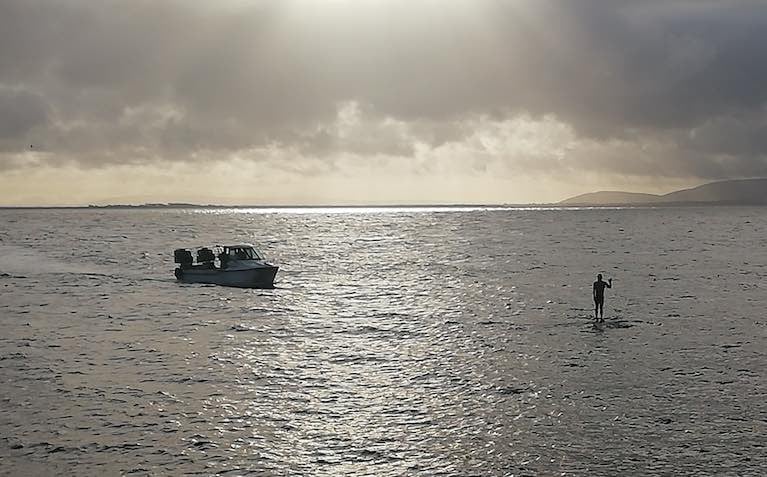Galway Harbour father and son Patrick and Morgan Oliver have recorded another rescue, saving a swimmer who got into difficulty off Salthill on Saturday morning.
The Olivers were fishing off Salthill in Galway Bay on Saturday morning when a swimmer was spotted taking refuge on Palmer’s Rock, about 200 metres from shore.
The alarm was raised by a member of the public, and the father and son took the man on board and brought him to Galway docks.
 The fishermen arrived on scene and took the swimmer to Galway Harbour for treatment for symptoms of hypothermia Photo: Kevin O'Connell
The fishermen arrived on scene and took the swimmer to Galway Harbour for treatment for symptoms of hypothermia Photo: Kevin O'Connell
The man was taken into the Galway RNLI station where he received treatment for symptoms of hypothermia until an ambulance arrived.
The father and son were given a mayoral award several months ago for their rescue of paddleboarders Ellen Glynn and Sara Feeney off the southernmost Aran island of Inis Oírr in mid-August after 15 hours at sea.
Several weeks after that, the Olivers rescued a man from the river Corrib.
Their relatives, Martin and Tom Oliver, who were also fisherman, lost their lives after an accident in the bay early this month.
The Galway RNLI lifeboat was launched in Saturday’s incident, and two members of the lifeboat crew also made their way to Salthill promenade to assist.
Galway RNLI deputy launch authority Seán Óg Leydon said many people who have taken up sea swimming this year during the Covid lockdown may not realise the dangers of winter swimming.
“The sea is a great resource for us but we have to respect it and our limits. Luckily this swimmer made his way to a place he could rest and wait for assistance,” he said.






























































